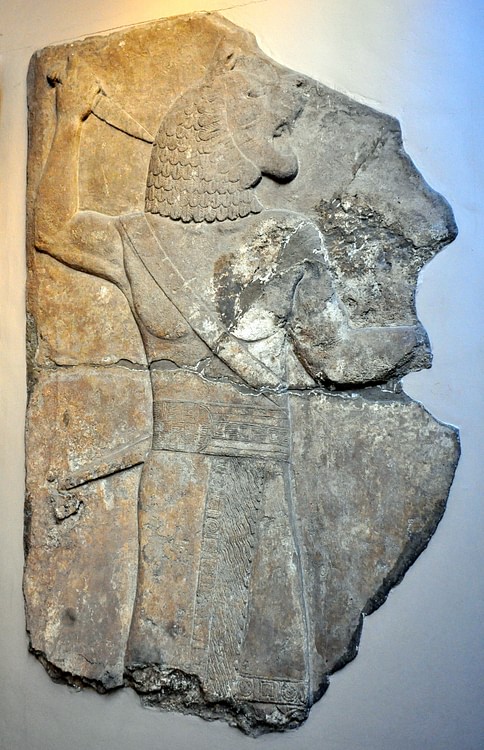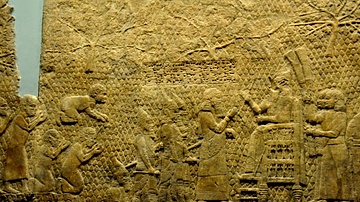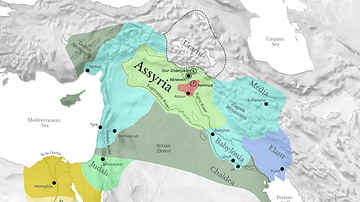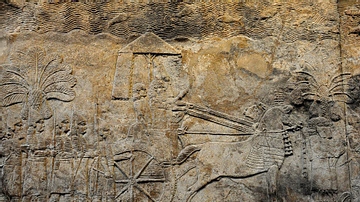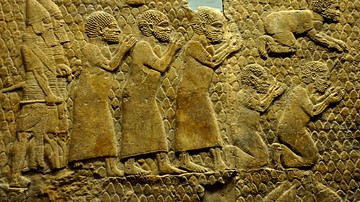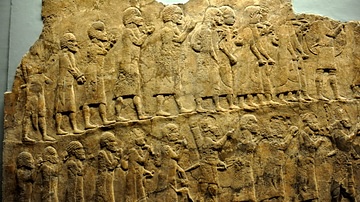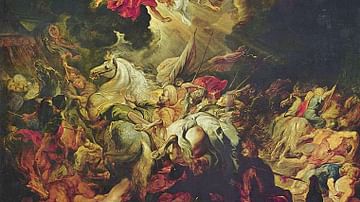Illustration
This gypsum wall relief depicts a standing lion-headed man holding a dagger, looking to the right. This is "the Great Lion" or "Ugallu". Layard found it in two fragments, among the so-called "Gallery XLIX (O); the long gallery" at the South-West Palace of Nineveh (Kouyunjik).
Layard, to describe this wall panel, stated that "Amongst the scattered fragments was the figure of a lion-headed man raising a sword which does not appear to have belonged to this gallery, unless it had been used to break the monotony of one long line of elaborate bas-reliefs representing nearly the same subject. Similar figures only occur at entrances in the ruins of Kouyunjik".
Neo-Assyrian Period, reign of Sennacherib, 700-692 BCE. From Mesopotamia, modern-day Iraq. (The British Museum, London)
Cite This Work
APA Style
Amin, O. S. M. (2017, August 23). Assyrian Ugallu. World History Encyclopedia. Retrieved from https://www.worldhistory.org/image/6980/assyrian-ugallu/
Chicago Style
Amin, Osama Shukir Muhammed. "Assyrian Ugallu." World History Encyclopedia. Last modified August 23, 2017. https://www.worldhistory.org/image/6980/assyrian-ugallu/.
MLA Style
Amin, Osama Shukir Muhammed. "Assyrian Ugallu." World History Encyclopedia. World History Encyclopedia, 23 Aug 2017. Web. 24 Apr 2024.
